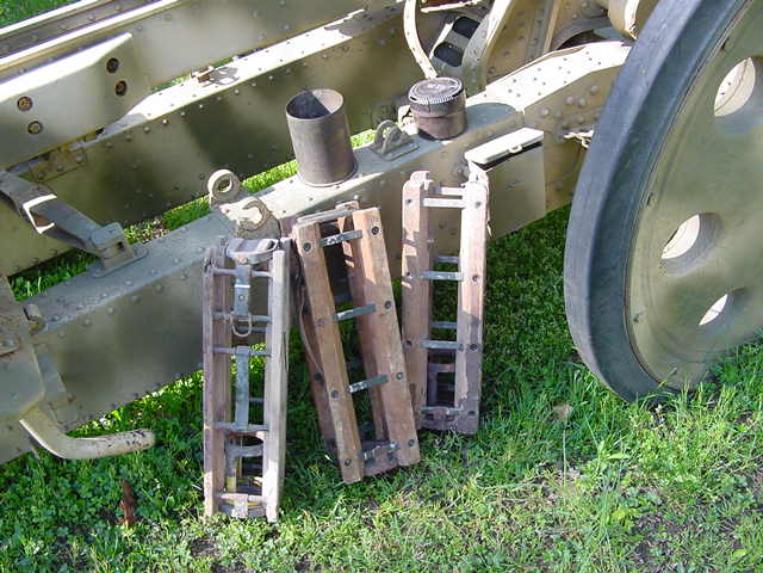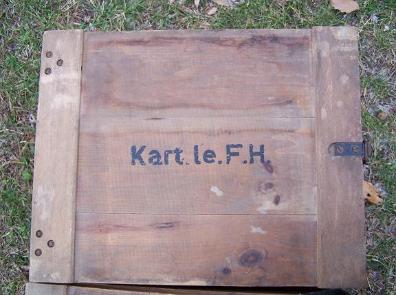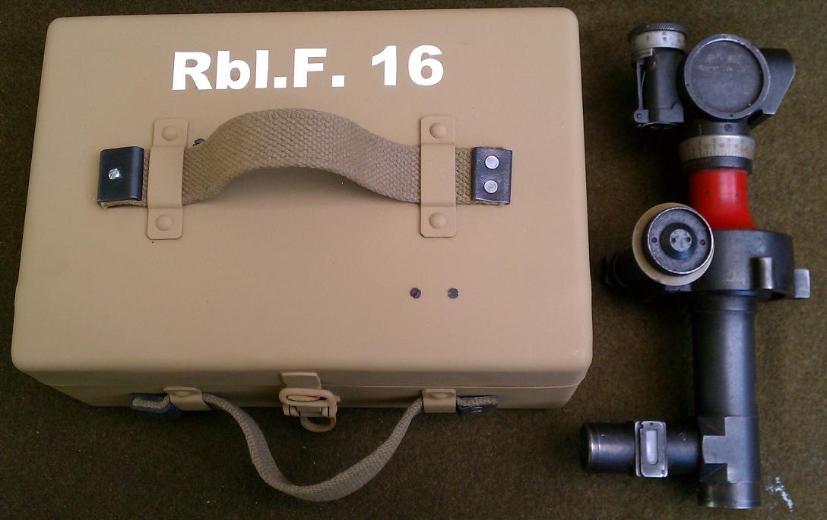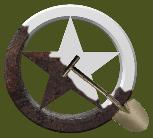| German 1940 LFH 18, serial number 17, in the HBO mini-series "Band of Brothers", episode 2 "Day of Days", above photo. In this scene 1st Lt Spears of "D" Company, 506th PIR is seen assaulting the gun crew position. Photo copyright HBO films 2002. |
| Country: Germany Type: 10,5cm le FH 18 Model: leichte Feldhaubitze 18 Manufacturer: Fried Krupp Date: 1940 Serial Number: 17 |
| German WWII 10,5cm lFH 18, Serial Number 17, shown above. This German 10,5cm Light Field Howitzer was produced in 1940 by Fried Krupp in Essen, Germany as serial number 17. This howitzer served in the German military through World War Two and was then sold to Spain after the war. This gun was then purchased with four other howitzers of the same style by The Steven Spielberg movie company and used in the HBO mini-series “Band Of Brothers”, the story of Easy Company ("E” Company), 506th Parachute Infantry Regiment (506 PIR), 101st Airborne Division during World War Two. This specific gun was captured by 1st Lt Spears, "D" Company 506th PIR, in Episode 2, "Day of Days”. After the filming of the mini-series, the five howitzers were purchased and imported into the United States by IMA-USA. QuestMasters Museum purchased this howitzer from IMA-USA in 2003 and remains in the QuestMasters Museum collection. This artillery piece was deactivated in compliance with BATFE regulations by the removal of the original breech block and replacement with a solid non-firing one piece breech block. |


| German 10,5cm LFH 18 Panoramic Telescope M16/18 mount, above left photo. German WWII shell storage and shipping containers, above right photo. In the center of the photo are three wood and steel shipping boxes for the 10,5cm projectiles. On the trail, or leg, is one 10,5cm model 6342 steel shell casing with C/12 primer and a bakelite can for the gunpowder charge bag. The German 10,5cm le FH 18 used separately loaded rounds: the shell (projectile), gun powder charge bag, and shell casing were pushed into the breech separately, instead of one complete fixed round. |


| German WWII 10,5cm Field Howitzer 18 gun sight storage box, above left photo. German WWII 10,5cm Shell Casings and storage containers, above right photo. Shown in this photo are six gunpowder charge increment shipping boxes for the 10,5cm Field Howitzer 18 (the increment bag was used to add more gun-powder charge bags to the shell casing for adjust the firing distance), two wicker shell casing shipping cases (each held six shell casings), thirteen shell casings, eight bakelite fuze shipping containers and one AZ23 Fuze. |



| German WWII 10,5cm shell casing shipping boxes for the 10,5cm Field Howitzer 18, above left photo. The shell casing for the lFH 18 was loaded with the gunpowder charge bag just prior to firing. This was done to adjust and correct for firing distance ranges. Stenciled markings on theses boxes, above right photo. The lower photo shows that these boxes were intended for use by the German Army (Heeres). |

| Quest Masters does not plan to restore this artillery piece, but rather display it in the camouflage scheme that was used in the movie. |


| German WWII Rundblickfernrohr 16 (Rbl. F. 16) Panoramic Telescope, above two photos. The Panoramic Telescope Rbl. F. 16, later replaced by the Rbl. F. 32 and 36, was used on the German 10,5cm lFH18. The telescope is a 4-power, fixed-focus type optic used for firing the howitzer. This example, shown above, was recovered from Normandy France by QuestMasters in 2015. The optical box has been restored by QuestMasters Museum. The paint, stenciling, web carrying handles with steel fitting and wooden internal mounts were all done by QuestMasters Museum. The steel box is made by avb43 (1943) with Waffen Amt inspection stamp. The telescope is marked: Rbl.F16(B) and was made by A.G. Hahn, Cassel, serial number 3137. |

| German WWII Winkel Messer 35, above photo. The Winkel Messer 35 was a clinometer that allowed the gunner of the 10,5cm lFH 18 to adjust the incline or elevation of the howitzer. The example shown above is the early World War Two variation that was supplied in a fitted wooden box with black stenciling on the lid. Later versions were supplied in a steel storage box. The lid is marked W.M.35 (1/6400). The clinometer is marked with the same markings and was made by Franz Kuhlmann Wilhelmshaven, serial number 15292. |

| German WWII Zundschrauben C/12 n.A., shell casing primer, above photo. The box shown above is for 20 C/12 n.A. (neue Art - new design') replaceable percussion primers used in the shell casing of the 10,5cm lFH 18, as well as other German WWII shell casings. The primer is threaded and was intended to be fitted to a shell casing prior to use and could be replaced in the field so a shell casing could be fired again if it did not have any damage. The box is marked 20 Stuck, Zundschrauben C/12 n.A. Ausfuhrung: B, Art des Schwartzpulvers: Erlenholzkohle, 41 dwx and was packaged on January 20th 1941. The box is shown with 17 fired primers. |



| German 10cm Gr. 39 rot H1 Shell Containers, above two photos. These two German 10cm Gr. 39 rot H1 Shell Containers were restored by QuestMasters Museum. Both are marked for use by the German Army (Heeres). |
